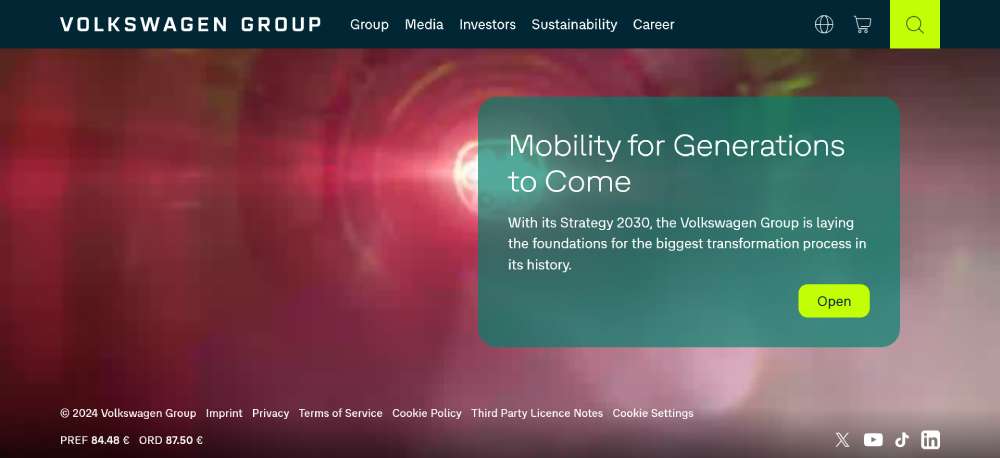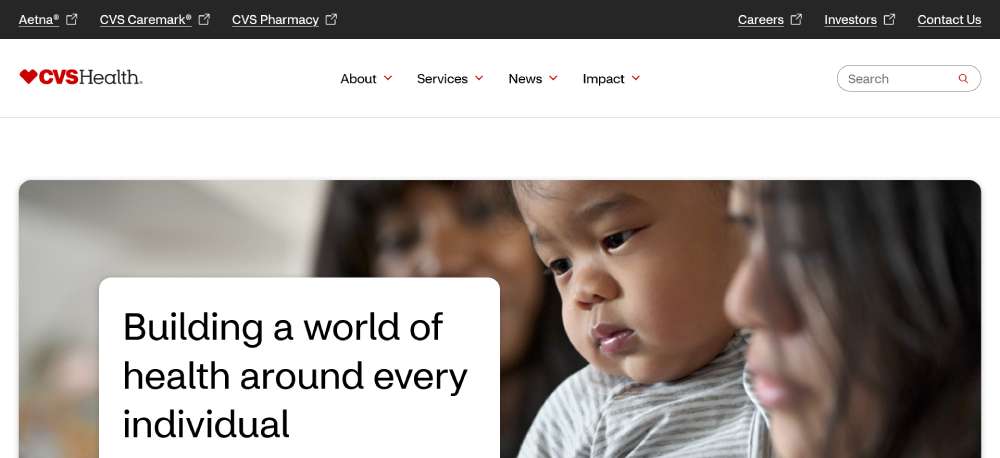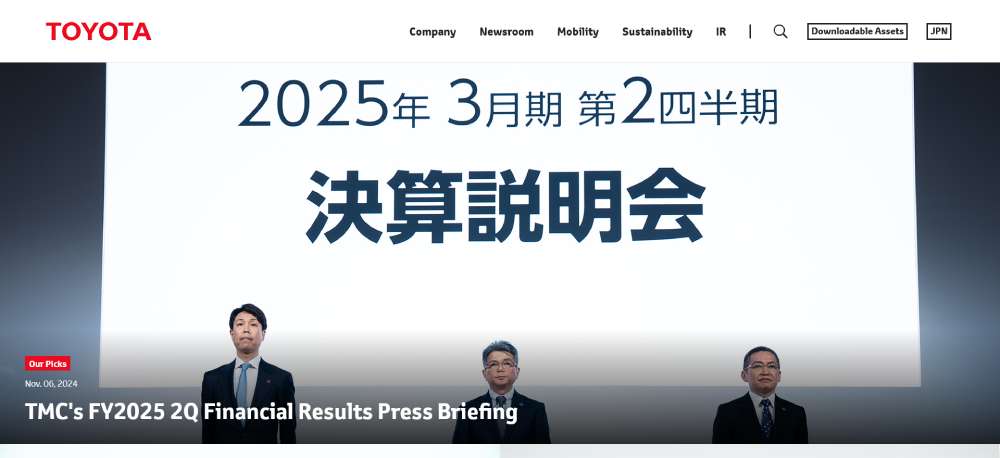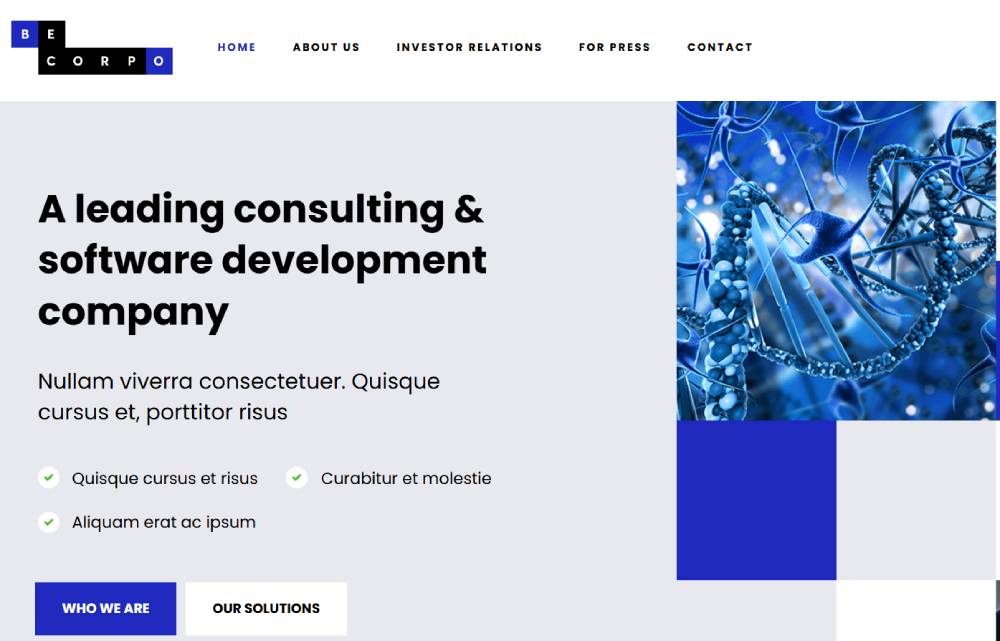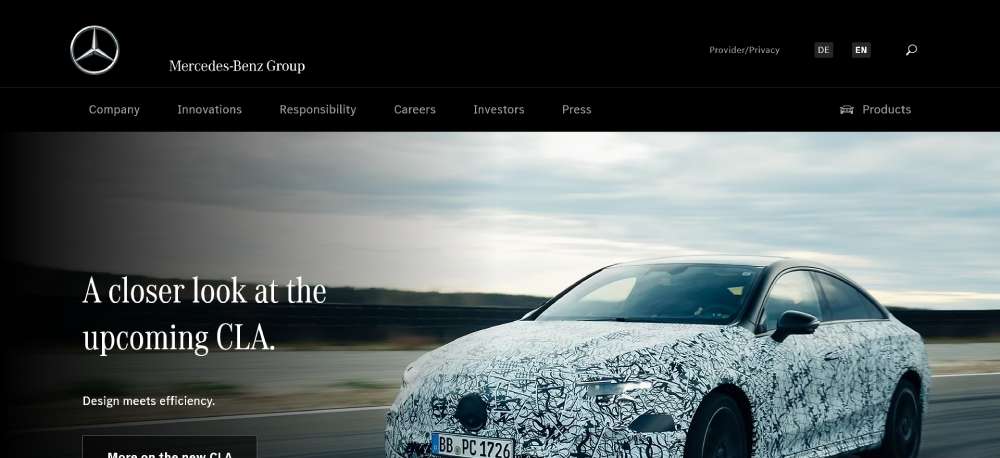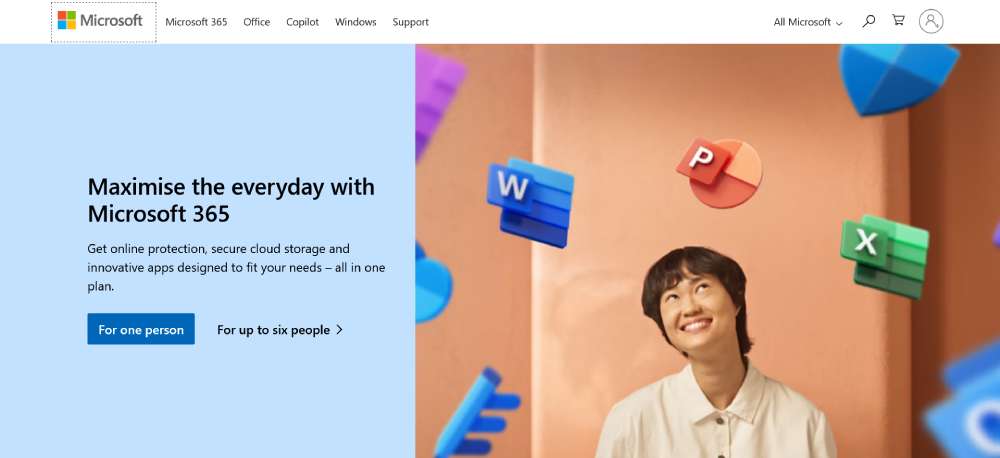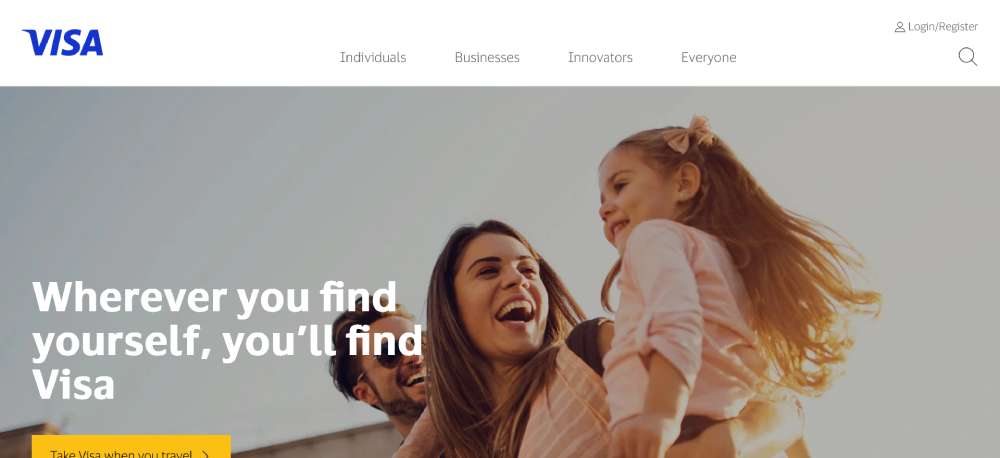
Recruitment Website Design Examples to Inspire You
November 22, 2024
The Best Industrial Website Design Examples
November 28, 2024An exceptional enterprise website design isn't just visually appealing—it's a strategic asset crucial for corporate success.
From mobile responsiveness to robust content management systems (CMS), crafting a site that balances user experience (UX) and performance is paramount.
Today, enterprise websites incorporate essential elements such as meta descriptions, SSL certificates (HTTPS), and page load speed to enhance both user interface (UI) and search engine visibility.
By examining standout examples, we can delve into website scalability, web accessibility, and advanced backend development techniques.
This article will guide you through innovative enterprise website design examples, showcasing how top businesses integrate key components like breadcrumb navigation, internal linking, and structured data.
You will discover practical insights on conversion rate optimization (CRO), web performance optimization, and effective use of call-to-action buttons.
By the end, you'll possess a clear understanding and actionable strategies for elevating your enterprise web presence, directly impacting your digital strategy and online success.
Enterprise Website Design Examples
Apple Inc.
A beacon of innovation, Apple Inc. crafts technology that shapes modern lifestyles. From iPhones to MacBooks, their products are synonymous with sleek design and high performance. Beyond hardware, Apple offers services like iCloud, Apple Music, and App Store, seamlessly integrating into daily life. With a deep commitment to privacy, sustainability, and quality, Apple continues pushing boundaries in digital experiences.
Volkswagen Group
Volkswagen Group envisions “Mobility for Generations to Come.” As part of its Strategy 2030, the company undertakes the largest transformation in its history, focusing on electric mobility, software-driven cars, and sustainability. Their goal is to redefine transportation for a digital, environmentally-friendly future, building cars that are both innovative and sustainable across their extensive brand portfolio.
CVS Health
As America’s health solutions leader, CVS Health offers comprehensive services across health insurance, pharmacy, and wellness. Their mission emphasizes accessibility, affordability, and simplicity, aiming to empower individuals to live healthier lives. Through integrated care models and digital tools, CVS Health connects patients to essential health services, striving to create a healthier, more equitable world.
Becorporation3
UnitedHealth Group
UnitedHealth Group is a comprehensive health and well-being company, blending care delivery with advanced health solutions. Known for its dual business arms, Optum and UnitedHealthcare, it works to make healthcare affordable, accessible, and efficient. With initiatives ranging from home care to AI-enhanced pharmacy services, UnitedHealth Group prioritizes impactful healthcare innovation for people worldwide.
Toyota Motor Corporation
Toyota leads in automotive innovation, striving to create vehicles and mobility solutions that enhance lives globally. Their initiatives span electric vehicles, sustainable energy use, and advanced safety technology. Committed to sustainability and social responsibility, Toyota envisions a future with zero emissions and safer roads, championing initiatives like "Beyond Zero" and a multi-generational approach to mobility.
Samsung Electronics
Samsung Electronics is a global leader in digital technology, offering cutting-edge products from smartphones and tablets to TVs and home appliances. Their innovations shape daily life, delivering advanced connectivity and convenience. Samsung’s commitment to sustainability and digital responsibility is reflected in initiatives to minimize environmental impact, aiming for a smarter, more eco-friendly future.
Alphabet Inc.
Alphabet Inc., the parent company of Google, is built on the ambition to explore transformative ideas. Beyond Google’s core search and advertising business, Alphabet invests in experimental fields, including health tech through Verily, longevity research with Calico, and cutting-edge tech innovations from X (the “moonshot factory”). Its structure fosters independent innovation across diverse sectors.
ExxonMobil
ExxonMobil pioneers energy solutions through research and technology, with a commitment to lowering emissions. The company’s portfolio includes petroleum, natural gas, and advanced chemical products. Focused on sustainability, ExxonMobil leads in carbon capture and biofuels, striving to meet global energy needs responsibly while advancing toward a lower-carbon future.
Becorporation2
Royal Dutch Shell
Royal Dutch Shell is a global energy company focused on transitioning to a net-zero emissions future. Engaged in oil, natural gas, and renewable energy, Shell leverages technology to improve energy efficiency and reduce environmental impact. Committed to sustainability, Shell invests in cleaner energy sources like hydrogen and wind, aligning with its net-zero goal by 2050.
Daimler AG (Mercedes-Benz Group)
Following a strategic reorganization, Daimler AG split its trucks division, becoming the Mercedes-Benz Group. Specializing in premium cars and vans, Mercedes-Benz Group is dedicated to luxury, sustainability, and innovation. With a focus on electric mobility and autonomous technology, the brand envisions a future where driving is synonymous with sustainability and luxury.
AT&T
AT&T is a telecommunications giant connecting millions through mobile and internet services. Known for its expansive wireless network, AT&T offers solutions from broadband to entertainment. With an eye toward digital innovation, AT&T aims to enhance connectivity, powering devices and people alike in an increasingly interconnected world.
Microsoft Corporation
Microsoft is a leader in technology and cloud solutions, with offerings spanning Microsoft 365, Windows, Azure, and AI solutions. Dedicated to productivity and digital empowerment, Microsoft integrates AI into its tools, pushing the boundaries of work and entertainment. The company also emphasizes sustainable practices and inclusive design, shaping a future where technology is accessible to all.
Meta Platforms (Facebook)
Meta, the company behind Facebook, drives social connection and digital immersion. As it redefines online interaction, Meta advances initiatives in the metaverse, VR, and AR. Known for platforms like Instagram and WhatsApp, Meta is at the forefront of social technology, enabling users worldwide to connect, share, and discover in new, immersive ways.
Becorporation
JPMorgan Chase & Co.
JPMorgan Chase & Co. is a global leader in financial services, serving millions across 100 markets. With a rich history spanning over 200 years, the firm is committed to fostering inclusive growth, supporting communities, and delivering impactful financial solutions. Through investments in workforce development and small businesses, they aim to make a positive, sustainable impact on society.
Johnson & Johnson
Johnson & Johnson drives innovation in healthcare through its pharmaceutical, medical devices, and consumer health sectors. Known for pioneering treatments in oncology, immunology, and neurology, J&J integrates rigorous science with compassionate care. Its MedTech division advances minimally invasive solutions, striving to redefine patient care and improve health outcomes globally.
Procter & Gamble
Procter & Gamble champions quality and sustainability across its expansive product line, from personal care to home essentials. Known for brands like Tide, Pampers, and Gillette, P&G is a leader in innovation and responsible practices. With initiatives in sustainability and inclusion, they aim to improve everyday life for consumers while minimizing environmental impact.
Nestlé
Nestlé, a global food and beverage leader, focuses on enhancing quality of life through nutrition and sustainability. From Nescafé to KitKat, their brands cater to diverse tastes and dietary needs. Committed to regenerative food systems and healthy lifestyles, Nestlé seeks to create a positive impact for future generations with a focus on responsible sourcing and community development.
Pfizer Inc.
Pfizer is dedicated to advancing health through scientific innovation, focusing on oncology, immunology, and vaccines. Known for its COVID-19 vaccine, Pfizer’s commitment extends to fighting infectious diseases and rare conditions. Through initiatives like PfizerForAll.com, they strive to make healthcare more accessible, bringing hope and improved health to millions.
Visa Inc.
Visa Inc. empowers global commerce with secure, fast digital payment solutions. As a trusted financial technology company, Visa connects individuals, businesses, and governments to its robust network. By advancing contactless payments and fraud protection, Visa enables seamless transactions that drive global economic growth and financial inclusion.
FAQ on Enterprise Website Design
What makes a great enterprise website design example?
A great enterprise website design seamlessly combines aesthetics with functionality. It’s about mobile responsiveness, page load speed, and a user-friendly interface (UI).
It employs structured data, solid back-end development, and integrates essential content management systems (CMS) to ensure efficient enterprise-level performance and scalability.
How do enterprise website examples integrate user experience (UX)?
Enterprise website examples excel by prioritizing user experience (UX). They employ website personalization, web accessibility features, and streamlined user journeys.
Effective use of visual hierarchy and interactive elements keeps the user engaged, while SEO-friendly URLs and navigation menus ensure intuitive interactions.
Why is mobile responsiveness crucial for enterprise websites?
Mobile responsiveness is non-negotiable today. Websites must adapt flawlessly across devices for optimal user engagement.
Responsive design not only improves user experience but also contributes to better Google Search Console results. With mobile optimization, enterprise sites offer fluid navigation and conversion rate optimization (CRO).
What role does web security play in enterprise websites?
Web security is critical for protecting sensitive corporate data. Implementation of SSL certificates (HTTPS), robust back-end systems, and regular security audits is essential.
Secure websites foster trust, ensuring user engagement metrics are positive, which indirectly boosts SEO.
How does content management impact enterprise website design?
Efficient content management systems (CMS) streamline the creation and updating of site content. This ensures content freshness, vital for maintaining user interest and search engine rankings.
Enterprise content strategy helps organize information architecture, facilitating user engagement and aiding in better domain authority.
What elements contribute to effective website scalability?
Scalability in enterprise websites means accommodating growth without compromising performance.
Implementing a reliable back-end development framework, optimizing site speed, and ensuring technical SEO are pivotal. Scalable sites handle increased traffic effortlessly, maintaining website analytics and user experience.
How do enterprise websites improve search engine visibility?
Search engine visibility is enhanced by employing meta descriptions, alt text for images, and efficient internal linking.Schema Markup and SEO-friendly URLs further assist in indexing.
Consistent organic traffic and low bounce rates are signs of well-optimized enterprise websites.
Why is corporate branding significant in enterprise web design?
Corporate branding on enterprise websites reinforces identity and trust. Incorporating brand-consistent design elements, custom web design, and coherent corporate site aesthetics ensures a recognizable and professional online presence, aiding in user trust and engagement.
What are key features in enterprise website examples?
Effective enterprise websites feature call-to-action buttons, minimalist design, and conversion rate optimization (CRO).
Wireframing tools help plan intuitive layouts, while interactive elements provide an engaging user experience. In addition, breadcrumb navigation aids in user-friendly site structure.
How do enterprise websites handle user-generated content?
User-generated content helps in driving organic traffic and increasing engagement. By incorporating interactive elements like forums or review sections, enterprise websites encourage user participation.
This content not only improves SEO but also enriches the online user experience, fostering community trust and loyalty.
Conclusion
Enterprise website design examples showcase how top businesses leverage user experience and key elements like internal linking, structured data, and website analytics to craft efficient, scalable sites.
These examples highlight the importance of mobile optimization, SSL certificates (HTTPS), and page load speed. By employing content management systems (CMS) and prioritizing web accessibility, these designs ensure seamless navigation and conversion rate optimization (CRO).
In studying these examples, you gain insights into call-to-action buttons, interactive elements, and the intricate balance of UI and back-end development. The focus on technical SEO offers lessons in enhancing organic traffic and solidifying domain authority.
Enterprise website designs are more than just aesthetic; they are strategic tools tailored for scalability and optimized performance. Understanding these aspects is essential for anyone aiming to elevate their digital strategy and online presence.
If you enjoyed reading this article on enterprise website design, you should check out this one about accessible websites examples.
We also wrote about a few related subjects like the best looking tourism websites, hotel website design, product landing page, great looking spa websites, cool looking personal trainer websites, top notch musician websites, the most impressive luxury websites and impressive animated websites.


